I mentioned that the camera only took pictures for 6 days. Well, that's what happens when you have a little rodent running in front of your camera causing the flash to go off all night long. These guys were using the Aplodontia burrow as a highway. There was nothing left at this location by me that would have attracted mice (ie. no seeds or other food). They did seem to have some interest in the Aplodontia's hay piles.
The major culprit (I believe) was Zapus princeps pacificus (Merriam 1897). Zapus come out of hibernation when the soil temperatures reach 8-9.5°C. These images were from late June after they had come out of hibernation and were busy putting on all the body fat they had lost over winter.
Zapus princeps most commonly occurs in mesic, montane habitats. It occupies plant communities dominated by alder (Alnus) or aspen (Populus tremuloides), stands of willow (Salix), and meadows where forbs and grasses are abundant. Typically they are found in close proximity to water in areas of dense vegetation along streamsThe above paragraph just about perfectly describes the habitat that these images were taken in. The set was in the undergrowth of an alder thicket, with nearby willows and 50m or so from an open meadow. The Mt. Beaver tunnel had standing water itself and the nearby meadow also has a stream running through it and many flooded plains.
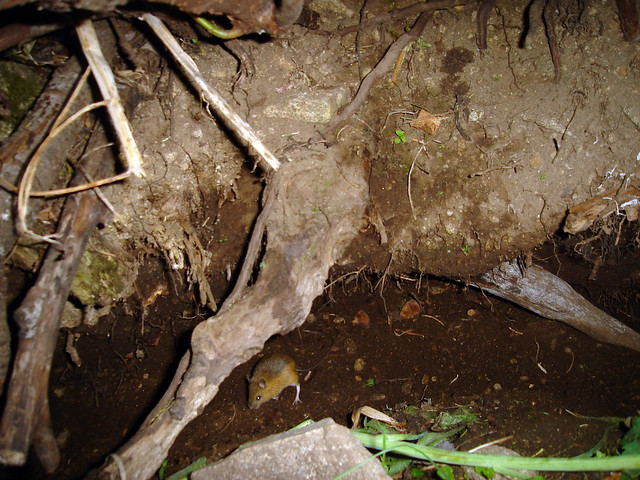
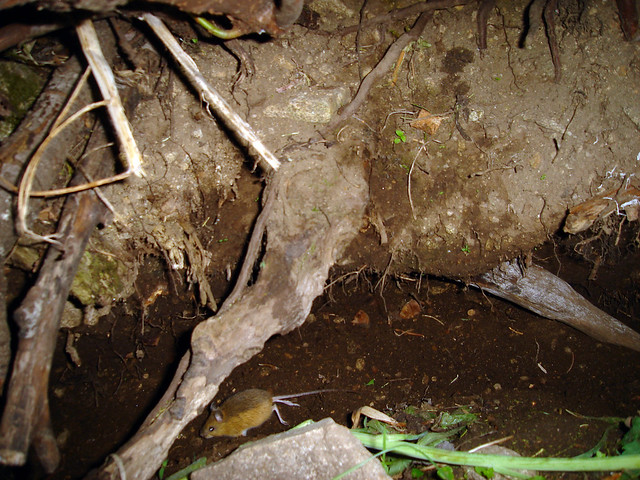 |
| Mid-jump! |
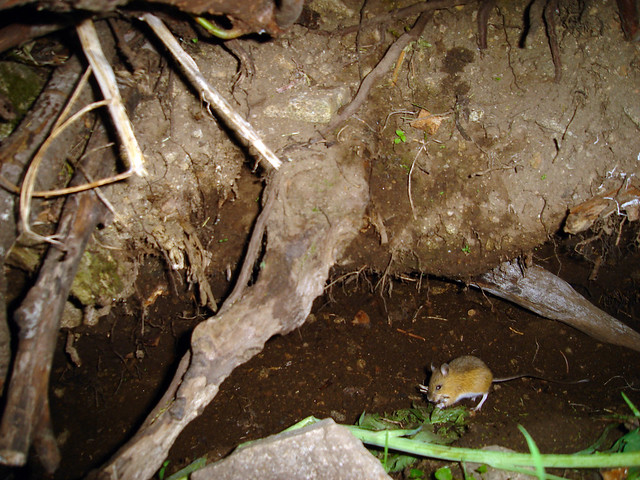

 |
| Bi-colored pilage |
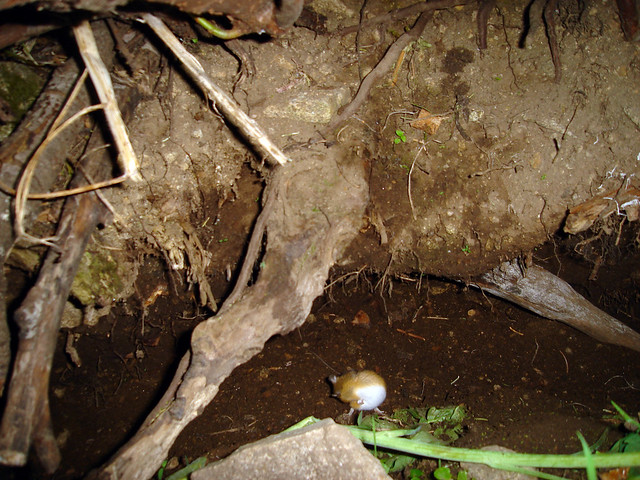 |
| Scratch, scratch, scratch |
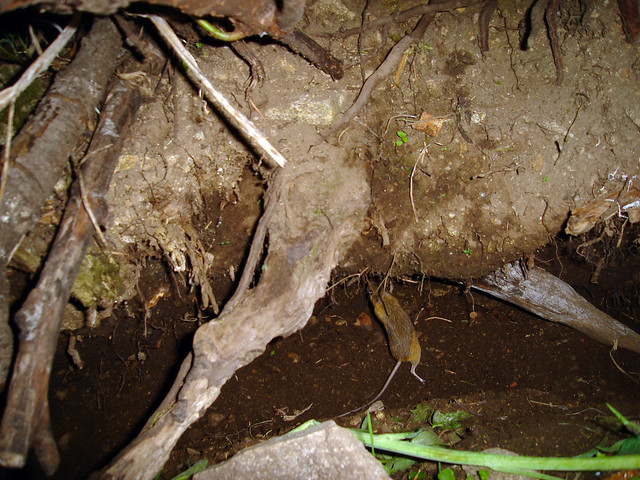
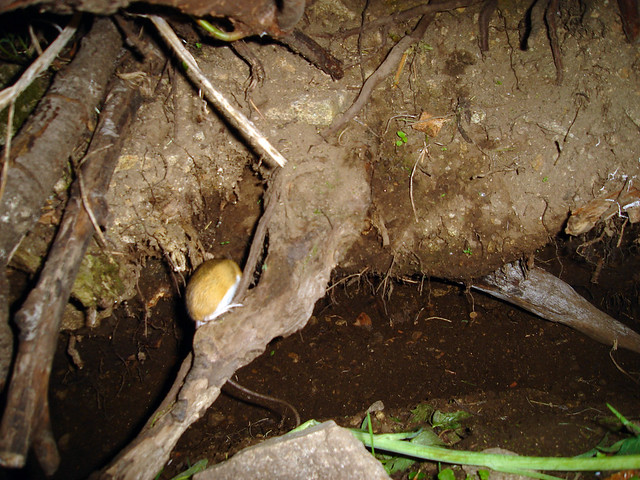 |
| Look how long that tail is. It drags all the way to the ground. |
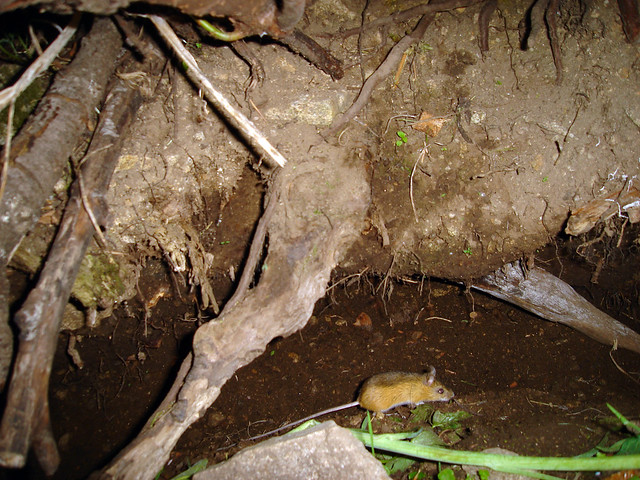
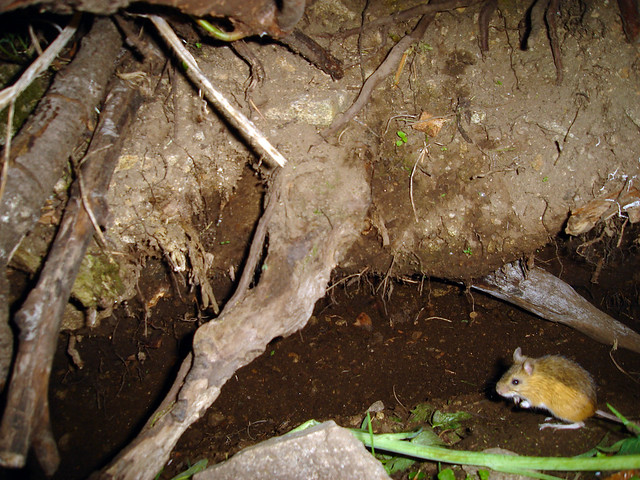
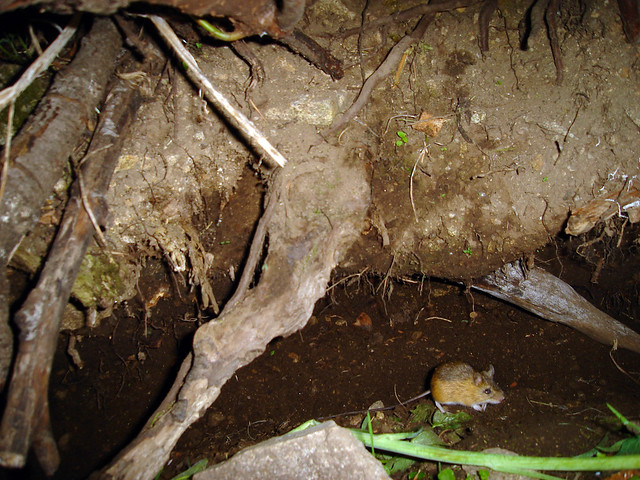
The second culprit below I am a lot less sure about. It is definitely a member of the genus Peromyscus. The huge ears lead me to Peromyscus truei. It could also be P. boylii or P. maniculatus and the large ears are just a juvenile characteristic as the set was also in their range.
The tail does appear shorter than the head and body combined (strike against P. boylii). It is hard to tell because of shadows but the tail may slightly be bi-colored (P. maniculatus should have a sharply contrasting bi-colored tail), but seems to lack any tufts on the end (strikes against boylii and truei adults). P. truei juveniles have a grayer pilage which seems consistent with this individual. Hard to tell from the angles of these pictures but it appears that the hind foot is smaller than the ears (strike against P. truei) and the ears don't appear to be heavily furred (consistent with P. maniculatus). The fur is slightly darker on the dorsal side than the flanks (P. boylii might expect more distinct lateral line, but may be missing in a juvenile). There is extensive white on the belly, legs and ankles (Maybe too much for P. boylii).
So a lot of words to come to no conclusion. We need to look at its teeth and measure its hind foot, but any thoughts from the comment gallery are most welcome. Thanks to the Codger for talking me out of thinking I was sure on this ID.
Hart et al suggest that "Zapus princeps competitively excludes the deer mouse, Peromyscus maniculatus, in the field". If is also the case that it competitively excludes all deer mice then this Zapus is not doing a very good job. Maybe the lack of exclusion has to do with the niche being a Mt. Beaver tunnel rather than a tunnel exclusive to smaller rodents.
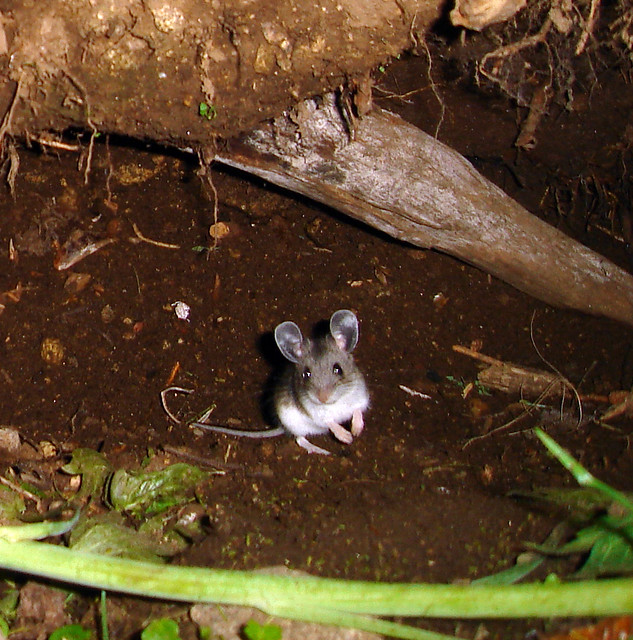 |
| Cropped image. Could probably hear the campus mess hall 400m away with those ears |
 |
| Tail considerably shorter than head + body. Hard to tell if it is bi-colored or just a shadow |
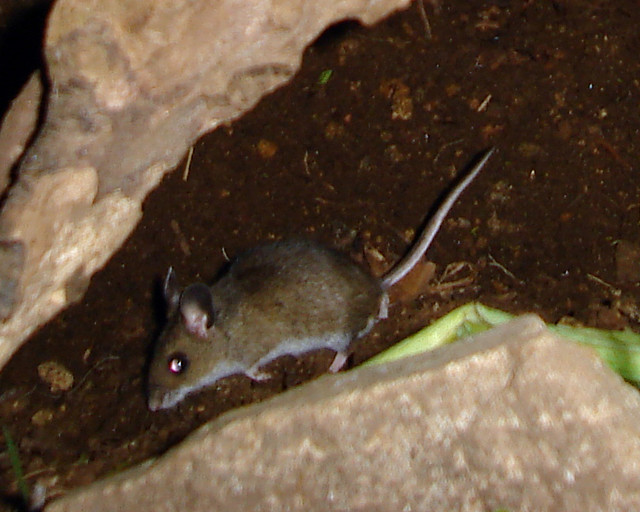 |
| Appears from this angle that the tail may be slightly bi-colored, but again may be a shadow. |
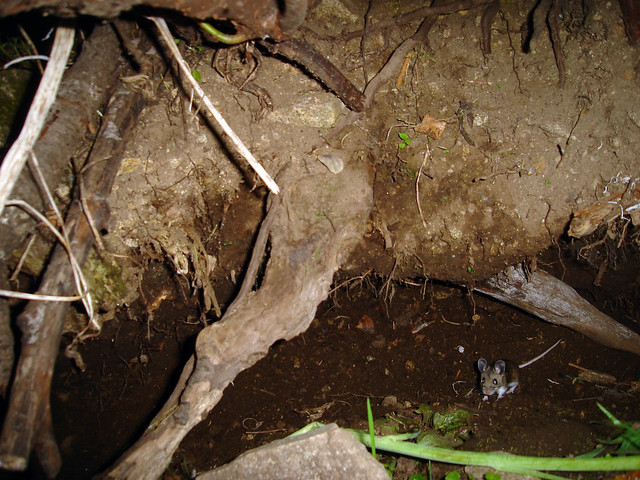
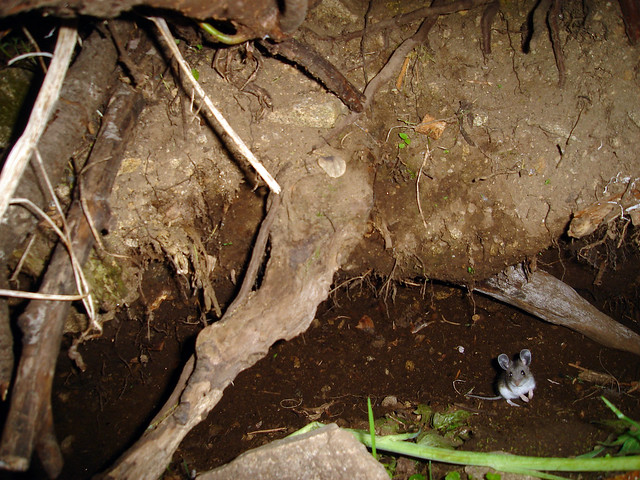
 |
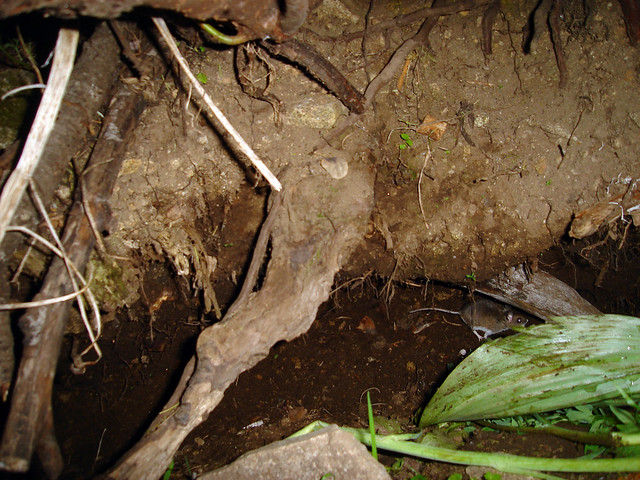
Works Cited:
Hart EB, Belk MC, Jordan E, and Gonzalez MW, "Zapus princeps", Mammalian Species 2004 749, 1-7 [Link]
Merriam CH, "Three new jumping mice (Zapus) from the northwest." Proceedings of the Biological Society of Washington 1897 11:103-104

Those mice are cute enough to sell. Your new pet store business!
ReplyDeleteThey are pretty damn cute especially with those giant ears! The jumping mice would be tons of fun to observe too.
DeleteRe: "So a lot of words to come to no conclusion." Ha!
ReplyDeleteMy guesses would are: 10% P. boylii, 30% P. truei, and 60% P. maniculatus (I hope that added to 100%!). I would say with 99% certainty that the dorsal part of the tail is bicoloured, and I think that it is really sharp.
Thanks for this post! There are few things I like more than agonizing Peromyscus IDs!
Christopher:
DeleteThanks for the input. I have never actually had one in hand so to say I am a novice in identifying Peromyscus would be an understatement. I will have to send you photos in the future for your thoughts.
To my eye, that's most likely maniculatus with big ears. And supposedly ear size can vary by region in Peros. But the bicolor tail, its length, the buffy body, white chest, eye size and separation all seem maniculatus. IMHO.
ReplyDeleteSuch great Zapus shots.
Thanks RT. Thats two for likely P. maniculatus. Teaching me not to jump to conclusions based solely on elephant ears.
ReplyDelete